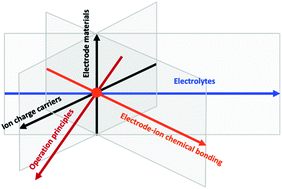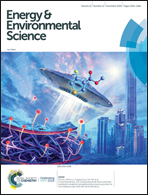A paradigm of storage batteries
Abstract
Research on batteries is at the crossroads. The research goal of Li-ion batteries is laser-focused, which is to push the performance limits of electrodes and electrolytes for an ever-higher energy density. However, the primary evaluation metric of storage batteries is the levelized energy cost, and there may exist several routes to reach a cost target. Therefore, it becomes urgent for researchers to have a roadmap for this new paradigm of storage batteries. In this article, I describe five dimensions of storage battery research from a chemical reaction point of view, where electrode materials and ion charge carriers represent the reactants, electrolytes provide the medium for the reaction, battery operation principles describe the configurations of the reactors, and electrode–ion chemical bonding reveals the nature of the reaction. The permutations of these five dimensions create 10 unique research planes, and the research activities on Li-ion batteries have been in one such plane: electrode materials × electrolytes. For Li-ion batteries, the electrode–ion interactions are largely taken as purely ionic; in contrast, the electrode–ion interplays may be to a large extent of donor–acceptor covalency when charge carriers are no longer small metal cations. Covalent-ionic bonding in batteries may represent the nexus to engender a constellation of new solutions in energy storage. Design of storage batteries entails a panoramic view with these five dimensions holistically considered. A deeper understanding of the chemical reaction nature of batteries will be advantage that unifies rather than compartmentalizes a paradigm of storage battery research.



 Please wait while we load your content...
Please wait while we load your content...